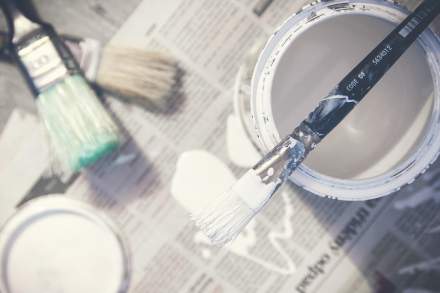The relationship between precious metals and inflation is a topic that has captured the interest of investors, economists, and financial enthusiasts alike.
With rising prices becoming a more common occurrence, people are turning their attention to different assets for protection. Precious metals, such as gold, silver, platinum, and palladium, are often regarded as potential hedges against inflation. But what does this really mean?
Understanding Inflation
Inflation refers to the general increase in prices and the decline in purchasing power of money. This phenomenon can have various causes, including increased demand, rising production costs, and monetary policy decisions.
Central banks often respond to inflationary pressures by adjusting interest rates, which can influence the value of different assets. As the cost of living rises, many individuals seek ways to maintain their wealth, leading to increased interest in alternative investments.
The Role of Precious Metals
Precious metals have held intrinsic value for centuries. They are tangible assets that do not rely on a government or financial institution for their worth.
Unlike fiat currency, which can be printed without limit, the supply of precious metals is relatively fixed, making them a more stable store of value over time.
This characteristic draws investors, especially during times of economic uncertainty. For more in-depth insights, Money Metals has become a trusted resource for those looking to understand how precious metals function as a store of value in times of inflation.
Historical Performance of Precious Metals
Historically, precious metals have shown resilience during inflationary periods. For instance, during the 1970s, when inflation rates soared, gold prices increased dramatically, peaking in 1980.
Similarly, during the financial crisis of 2008, gold once again proved its worth as a safe haven, rising significantly even as many other assets plummeted.
Silver has also demonstrated a strong correlation with inflation. Both gold and silver tend to move in tandem during periods of economic distress, although silver can be more volatile due to its dual role as an industrial metal.
While historical performance does not guarantee future results, it provides valuable context for understanding the potential of these assets.
Psychological Factors and Investor Behavior
The psychology of investors plays a considerable role in the demand for precious metals. When inflation fears creep in, many people tend to flock to gold and silver as safe havens.
This behavior can create a self-fulfilling prophecy. As more investors buy into precious metals, prices increase, further solidifying the perception that they are a reliable hedge against inflation.
This phenomenon often leads to market dynamics that can drive prices higher. The more people perceive precious metals as a safeguard, the more they buy, which can reinforce the idea that these assets are indeed inflation-proof. A cycle of speculation and confidence can emerge, influencing trends in the market.
The Mechanics of Gold as a Hedge

Gold is often referred to as the go-to asset for inflation hedging. Its value typically rises when the purchasing power of fiat currencies declines. This inverse relationship makes gold an appealing choice for investors aiming to protect their wealth.
Additionally, gold does not yield interest or dividends, which may seem like a drawback at first glance. However, this non-yielding nature means it can act as a counterbalance to the depreciation of currency-value over time.
When traditional savings accounts offer lower returns due to high inflation, gold’s potential price appreciation becomes more attractive.
The Influence of Central Banks
Central banks play a pivotal role in the landscape of precious metals. Their policies can dramatically affect inflation rates and, in turn, the allure of metals like gold.
When central banks increase money supply, devaluing currency, precious metals often benefit from increased demand. For instance, if a bank lowers interest rates, the opportunity cost of holding gold decreases, leading more people to invest in it.
Conversely, a tightening of monetary policy may diminish gold’s appeal. Understanding the broader economic environment and central bank actions is essential for investors considering precious metals as an inflation hedge.
Diversifying with Silver and Other Metals
While gold often takes center stage, silver and other precious metals also warrant attention. Silver, in particular, has a unique position due to its industrial applications.
As economies expand and demand for silver in manufacturing rises, prices can increase, providing a potential hedge against inflation.
Platinum and palladium, primarily used in automotive catalysts, can also serve as hedges, albeit with more volatility due to their industrial dependency. For investors looking to diversify, a mixture of these metals may provide a balanced approach to inflation hedging.
Exploring Risks and Limitations
While precious metals can serve as a hedge against inflation, they are not without risks. Market volatility can pose a significant challenge; prices can swing dramatically based on investor sentiment, geopolitical factors, and supply-demand imbalances.
Moreover, the absence of income from precious metals means that investors must rely solely on price appreciation.
Storage, insurance, and transaction costs can also cut into profits, making it essential for potential investors to consider these factors. These risks can make precious metals a less appealing option for some, particularly those who prefer income-generating investments.
The Impact of Technological Advancements
As technology advances, the landscape surrounding precious metals is changing. Digital currencies and blockchain technology are creating new avenues for investment and potentially altering traditional views on value storage.
While some may argue that cryptocurrencies could replace precious metals as a hedge, many investors still see gold and silver as timeless assets.
The interplay between technology and precious metals may shape future investment strategies. The rise of exchange-traded funds (ETFs) and other financial instruments has made it easier for investors to gain exposure to these metals without needing to physically store them.
This evolution reflects a shift in investor preferences and accessibility.
Global Demand and Supply Dynamics
Global demand dynamics significantly influence precious metal prices. Emerging markets, particularly in Asia, have seen increased consumption of gold and silver, driven by rising incomes and a growing middle class.
Cultural factors, such as gold’s significance in wedding traditions and festivals, further amplify demand.
Supply constraints, whether from mining disruptions or geopolitical tensions, can create price pressures. Understanding these dynamics is crucial for anyone considering investing in precious metals as a hedge against inflation.
Keeping a finger on the pulse of global markets can provide valuable insights.









Leave a Comment